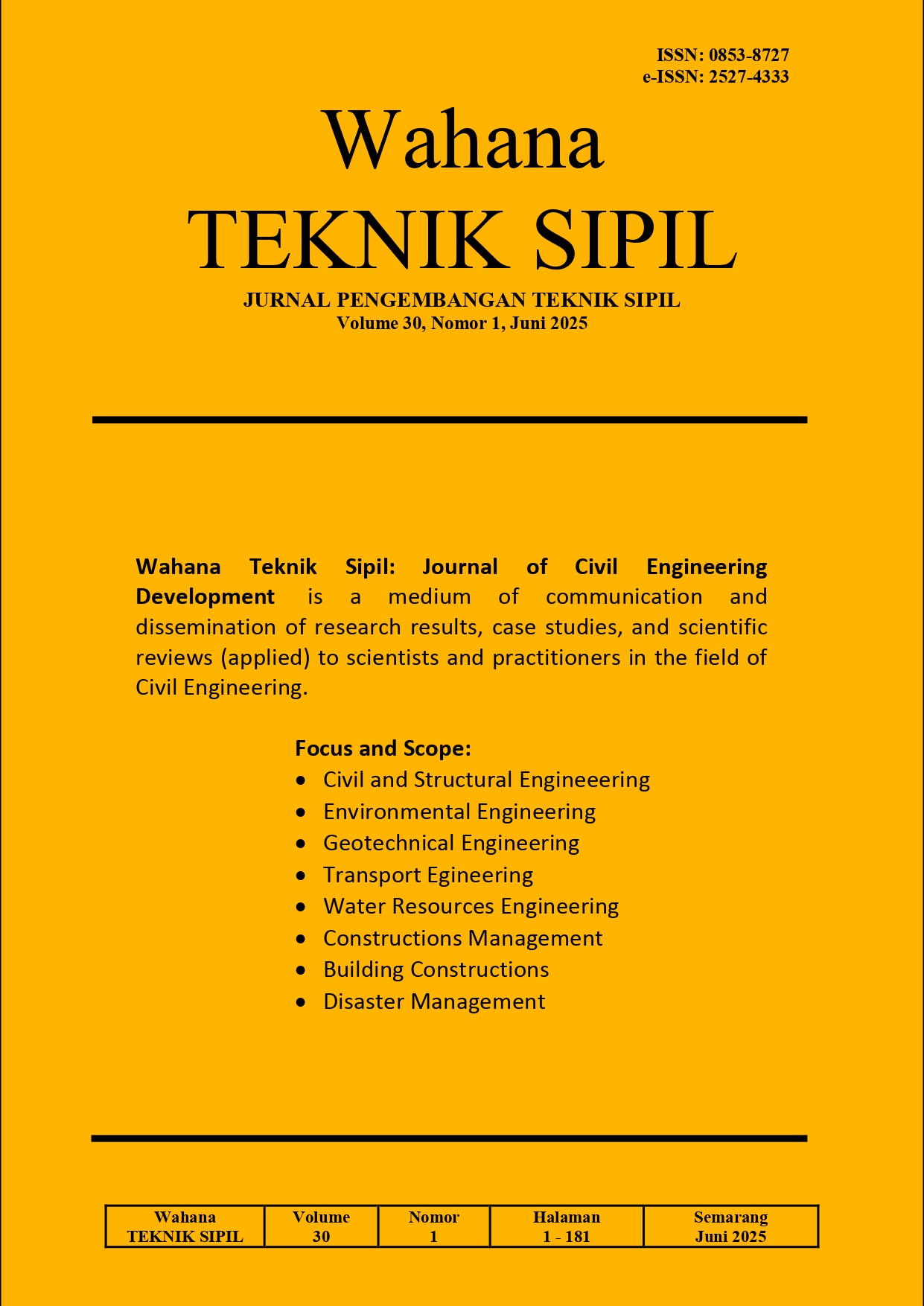OPTIMASI KUAT TEKAN PASTA GEOPOLIMER BERBAHAN DASAR FLY ASH DENGAN VARIASI RASIO MASSA FLY ASH DAN ALKALI AKTIVATOR (FA/AA)
DOI:
https://doi.org/10.32497/wahanats.v30i1.6441Abstract
Cement production generates high CO₂ emissions, which have a negative impact on the environment. To reduce this carbon footprint, alternative materials to cement are needed. Geopolymer paste presents a promising solution as it utilizes industrial waste such as fly ash, is environmentally friendly, and can achieve good mechanical strength. This study aims to optimize the compressive strength of fly ash-based geopolymer paste by varying the mass ratio of fly ash to alkaline activator (FA/AA). The fly ash used was characterized using X-Ray Fluorescence (XRF), X-Ray Diffraction (XRD), and Scanning Electron Microscope (SEM) to determine its crystal structure, chemical composition, and particle morphology. The characterization results indicate that the fly ash is predominantly amorphous, classified as Class F according to ASTM C618-2019, and has spherical particles with sizes less than 2 µm, making it suitable as a geopolymer precursor. Test specimens were prepared in the form of 50 mm × 50 mm × 50 mm cubes, and compressive strength tests were conducted at 3, 7, and 28 days with varying FA/AA ratios. The test results showed that compressive strength increased with the FA/AA ratio up to an optimum ratio of 2.5, then decreased at a ratio of 3. This indicates that the FA/AA ratio significantly affects the development of compressive strength in geopolymer paste. These findings are expected to serve as a foundation for developing environmentally friendly alternative materials to replace Portland cement.
Downloads
Published
Issue
Section
License
Copyright (c) 2025 budi nayobi, Rosidawani, Bimo Brata Adhitya

This work is licensed under a Creative Commons Attribution 4.0 International License.
Authors who publish with this journal agree to the following terms:Authors retain copyright and grant the journal right of first publication with the work simultaneously licensed under a Creative Commons Attribution License that allows others to share the work with an acknowledgement of the work's authorship and initial publication in this journal.
Authors are able to enter into separate, additional contractual arrangements for the non-exclusive distribution of the journal's published version of the work (e.g., post it to an institutional repository or publish it in a book), with an acknowledgement of its initial publication in this journal.
Authors are permitted and encouraged to post their work online (e.g., in institutional repositories or on their website) prior to and during the submission process, as it can lead to productive exchanges, as well as earlier and greater citation of published work (See The Effect of Open Access).






